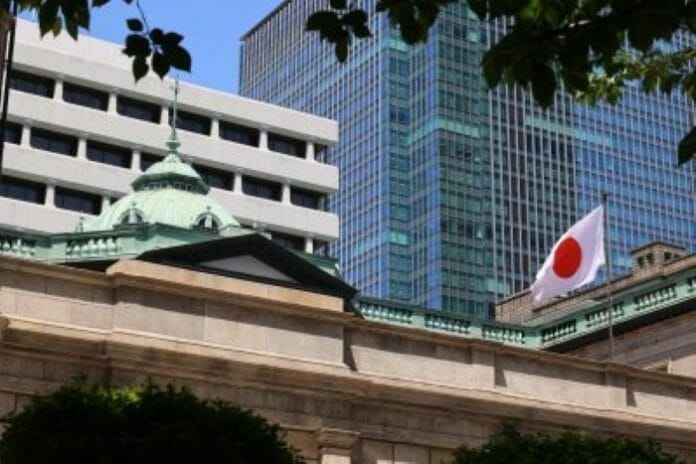The recent revisions by the Bank of Japan (BoJ) regarding consumption, production, and export assessments reflect a cautious stance amidst a backdrop of global economic slowdown.
While maintaining an overall view of moderate recovery, the BoJ cited technical factors, such as production suspensions in the automobile sector, for the downward revisions.
However, there’s a sense of optimism in their forecast that may not fully acknowledge the broader challenges posed by the global economic slowdown.
The weakness in consumption is attributed more to a decline in real wages rather than just production suspensions in the automobile sector. Despite stronger-than-expected results from the annual wage bargaining, it’s expected that most of the wage increases will be absorbed by offsetting declines in household savings rather than fuelling household consumption.
This cautious sentiment was echoed in the summary of opinions from the March monetary policy meeting, highlighting the need for wage increases that can outpace inflation to solidify the economy’s virtuous cycle from prices to wages.
Weak consumption trends are exerting pressure on both supply and demand, thereby dampening inflationary pressures. Recent data on Japan’s Consumer Price Index (CPI) show a significant decline compared to previous periods, indicating a deceleration in inflation. This trend, coupled with sluggish consumption, might prompt the BoJ to lower its GDP and CPI forecasts for the upcoming fiscal years.
Looking ahead, the BoJ’s forecast of inflation running at 2% in the future seems optimistic, given the current economic challenges. Inflation deceleration signals persisting weakness in domestic demand and suggests that businesses may struggle to sustain price increases. With the possibility of further slowdowns in the global economy and challenges in domestic demand, revisions to economic assessments later in the year could complicate the BoJ’s plans for additional rate hikes.
Moreover, the recent data on industrial production paints a sobering picture, indicating a limited rebound after a significant decline in previous months. The timing of the Lunar New Year has strongly influenced production figures for January and February, making it crucial to analyse trends over a longer period.
Despite some resilience shown by intermediary goods, the overall decline in production across multiple sectors suggests a broader weakening of economic activity, not limited to the automobile sector alone. While producers expect a modest uptick in March, it’s clear that production activity remains subdued. This subdued production activity, coupled with declining exports amid a slowing global economy, poses challenges for Japan’s economic outlook.
As such, any downward revisions in GDP and CPI forecasts by the BoJ in the coming months would underscore the persistent headwinds faced by the Japanese economy, potentially influencing the central bank’s policy decisions going forward.
Market commentary and analysis from Luca Santos, currency analyst ACY Securities









